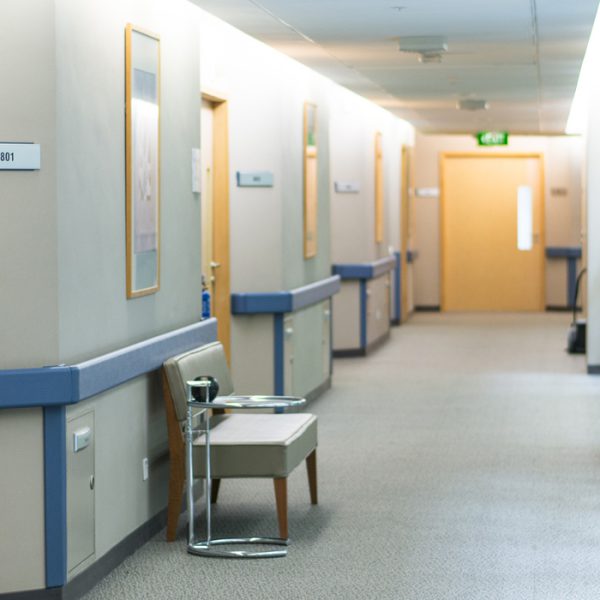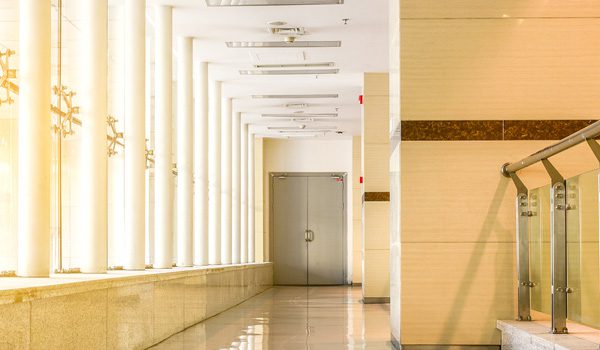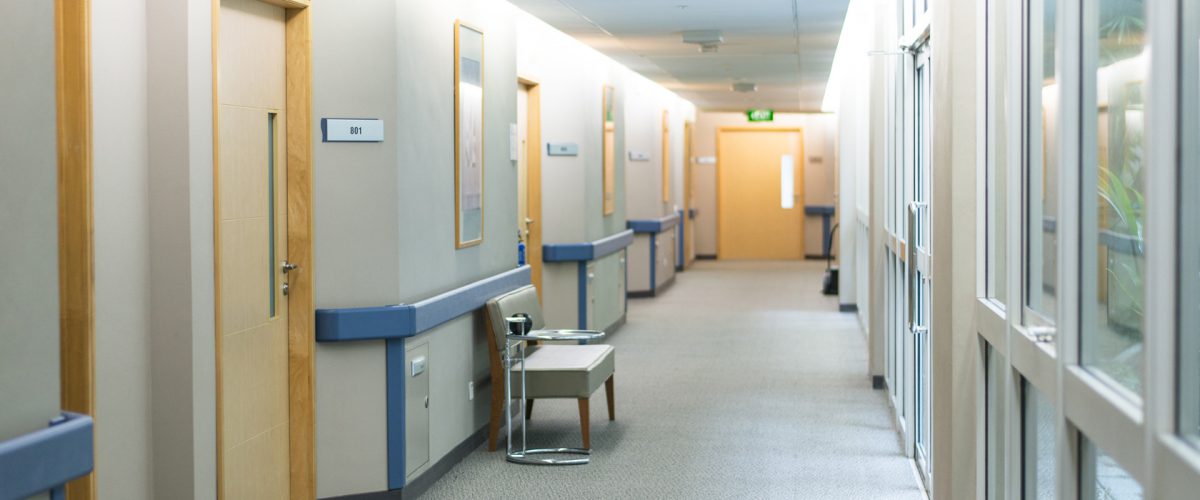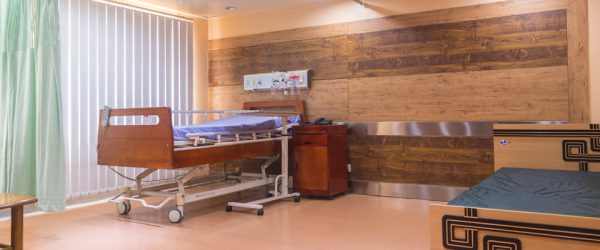Thought Leadership: Compliance & Risk
Aging Infrastructure and Barrier Management
Aging Infrastructure and Barrier Management
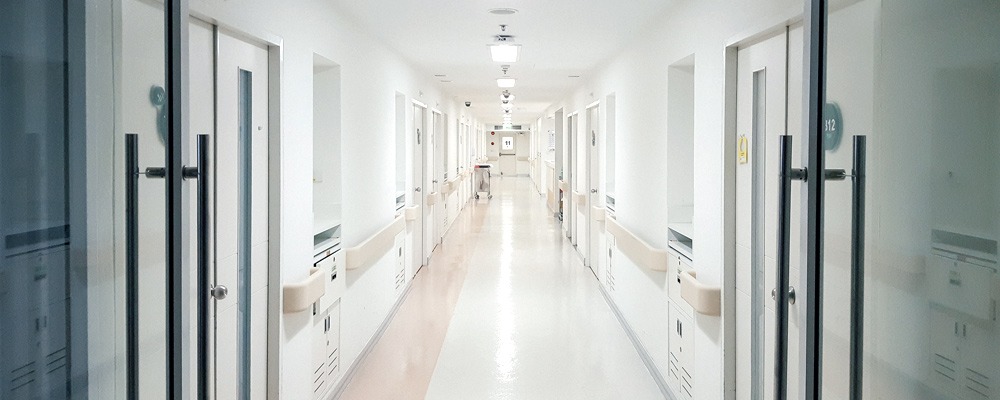
As health systems repair aging infrastructure and buildings to improve the patient care environment, they need to be diligent about barrier management.

Patrick Sloan
Managing Executive
ATG, a JLL company
patrick.sloan@jll.com
+1 (224) 250-5529
.
If we were having coffee and you asked me what I considered to be the major issue affecting healthcare, I might respond in several ways. I might first mention the 500,000 – 600,000 people that come into our hospitals each year and get a hospital-acquired infection (HAI), and the fact that between 60,000 to 70,000 people infected will possibly die every year. The CDC has identified the physical environment as a contributor to HAI.
Or I might respond to you how, during accreditation surveys, the surveyors seem to gravitate to the same issues that have little impact on the patient care environment. I cannot imagine how many adverse patient outcomes are linked back to wires on a sprinkler pipe. Carefully, I would avoid the temptation to get on a soapbox on the topic of how we should focus on the physical environment that the patient and caregiver reside and work in, and its impact on them, rather than code requirements that do not impact or create a safe environment.
Or I might share my concerns about the aging infrastructure in many of our hospitals today, which is what I am choosing to discuss today. In 1946 two Senators, Harold Burton and Lister Hill sponsored the Hospital Survey and Construction Act under President Truman. This Act was rebranded as the Hill-Burton Act, and its intent was to create 4 ½ beds per 1,000 people. This resulted in disbursing $3.7 billion dollars to hospitals, creating over 10,000 construction projects, and nearly half a million new hospital beds. By 2000 the Hill-Burton Act had dispersed more than $4.6 billion to more than 6,800 healthcare facilities in over 4,000 communities. When this Act ended many new, small rural hospitals had been built. Following the Hill-Burton Act, many of these hospitals began to add wings and new technologies and grew in size and complexity.
Many of the original Hill-Burton Act funded buildings are still actively treating patients. Unfortunately, these same hospitals typically have struggled financially to compete, and reduced funds have made it difficult to maintain their building infrastructure. Hospital buildings prior to 1991 were not required to be fully sprinklered, so many were built with design criteria to shelter patients in place through building construction creating compartments. These original compartments were required to be intact from floor to the underside of the deck above, to resist the passage of smoke or products of combustion. The government agency, the Health Care Finance Administration (HCFA) adopted the 1981 and later the 1985 edition of the Life Safety Code® (NFPA 101-1985), which both supported this concept of building compartmentation.
In 1993, The Joint Commission adopted the 1991 edition of NFPA 101, the Life Safety Code. This was the first edition of the Life Safety Code to require approved, supervised sprinkler systems for all new construction and renovation for Healthcare. The Joint Commission also later adopted the 1997 edition of the Life Safety Code, which continued to promote a sprinkler protected building. NFPA had evidence that a fully sprinkler protected building was a safer building from products of combustion than a building built with compartmentation as its primary protection, which resulted in some building reductions. For example, in a compartmentalized building, it is important to provide physical separation to protect the patient in their room from the corridor. However, in a building protected with an approved, supervised sprinkler system the corridor walls are not required to extend from floor to the underside of the deck above, as the approved supervised sprinkler system provides a level of safety to the patient.
Although HCFA (renamed in 2001 to the Centers for Medicare & Medicaid Services, also known as CMS) did not move from the 1985 edition of the Life Safety Code to the 2000 edition until 2003, The Joint Commission’s proactive decision is responsible for the saving of hundreds of lives from fire-related deaths or injury. It has been proven that the fully protected building by an approved sprinkler system is, in fact, a safer building, protecting its occupants. In 2016, CMS adopted the 2012 edition of the Life Safety Code, even though the 2015 was in circulation at the time.
An important feature to remember is that even as we introduced sprinkler protection to our buildings, the Life Safety Code also continues to rely on compartmentation to ensure patient safety and that egress is maintained. The introduction of suites and smoke compartments create a series of barriers that must be maintained.
So, over our cup of coffee, I would be explaining the importance of the decision to adopt the right editions of the various codes, including the Life Safety Code and the continued need to implement Barrier Management. With the advent of the sprinklered buildings in 1993, many installations included busting holes in walls that are required to be maintained as either smoke resistant or fire resistant. Over the past thirty years, many of these breaches have been repaired. The cycle of cabling our buildings also appears to be declining and nearing its end as we are closer to wireless systems in many buildings.
But our aging buildings continue to be in need of upgrades and repairs. Original building systems are undersized to meet our current and future patient and building needs. Once again, our system of barriers will be challenged. It is extremely important that those responsible for maintaining our building compartmentation be included in early discussions so they can plan and execute repairs when access is available. As new systems are planned and installed, they will inevitably breach our barriers. In many cases, this occurs late in the construction process, sometimes even after patient care services begin. This increases the need for close oversight of barrier management and interim mitigation activities.
Ventilation is being recognized as a significant component in reducing the Hospital Acquired Infections mentioned earlier. In some situations, room walls must be sealed for the ventilation system to perform to new specifications. In addition to ventilation, other utility systems are being upgraded. Water management may require new piping runs; in some building locations there is a need for additional electrical distribution; Telemetry and other computer-based equipment may also cause breaching our barrier system. There is also a requirement to remove items improperly installed. For example, the wires on sprinkler piping mentioned earlier is a non-compliant condition. When these wires are removed, there will be holes in our barriers that will need to be repaired.
We need to be a team, coordinating our activities to ensure access to the barriers as the breaches occur; and providing corrective actions as penetrations are identified. Compartmentation continues to be important, serving as areas of refuge for those that may be unable to protect themselves because of their medical or behavioral conditions. While adding approved supervised sprinkler systems has been credited with saving lives by shortening the fire event, we must remember what can quickly hurt the occupant. Fire destroys the property, but smoke kills. Improper management of our barriers may result in loss of life from the products of combustion. Our management of barriers is an incredibly important part of patient safety and building maintenance. As we strive to repair our aging infrastructure and buildings to improve the patient care environment, we must be diligent in barrier management. Correctly designed, installed and inspected barriers will create effective compartmentation, and then proper maintenance of these barrier systems will ensure on-going reliability for the life cycle of the building. ■


